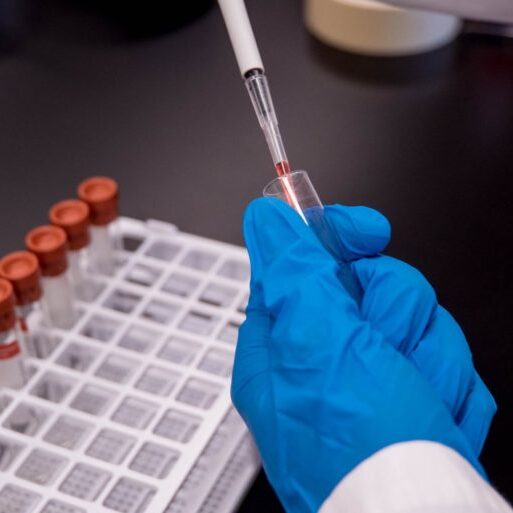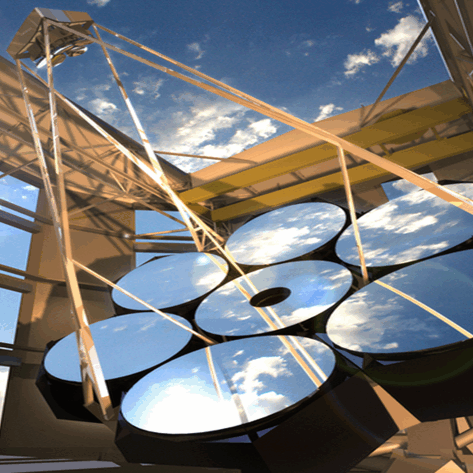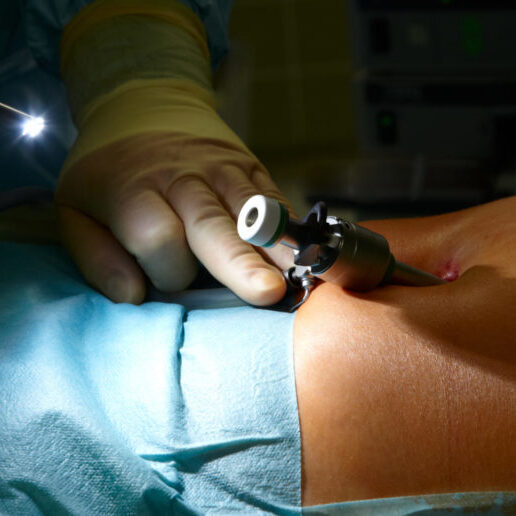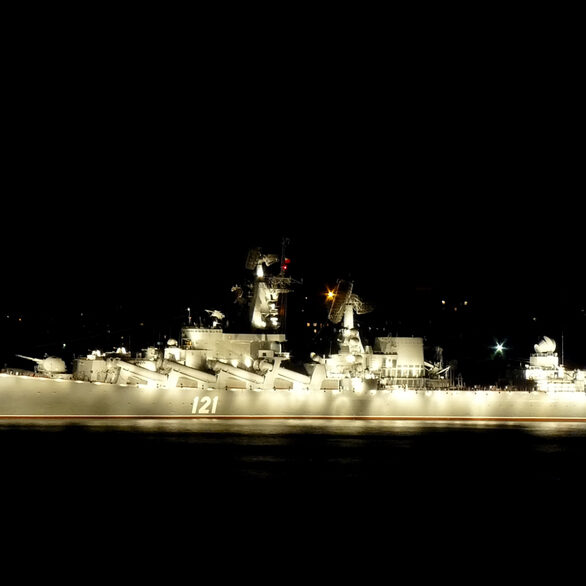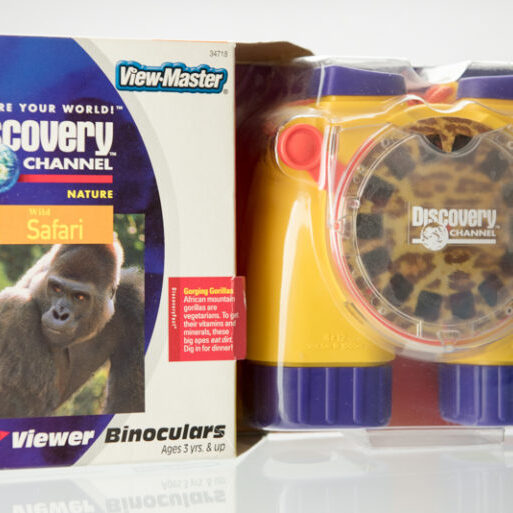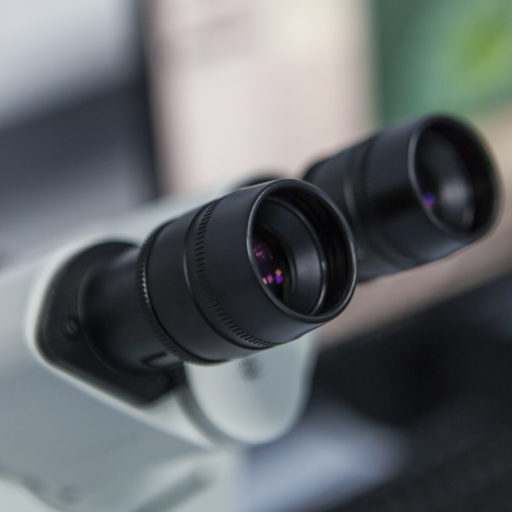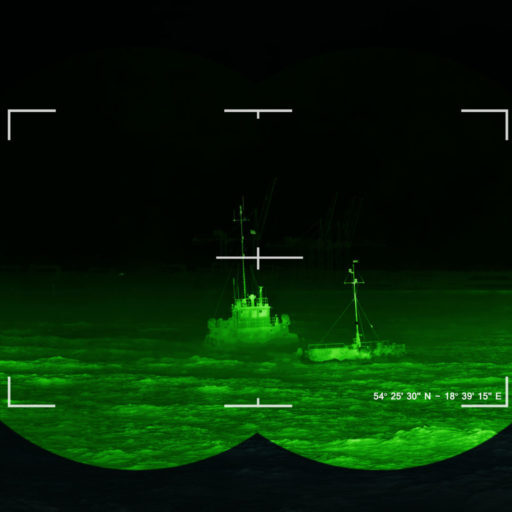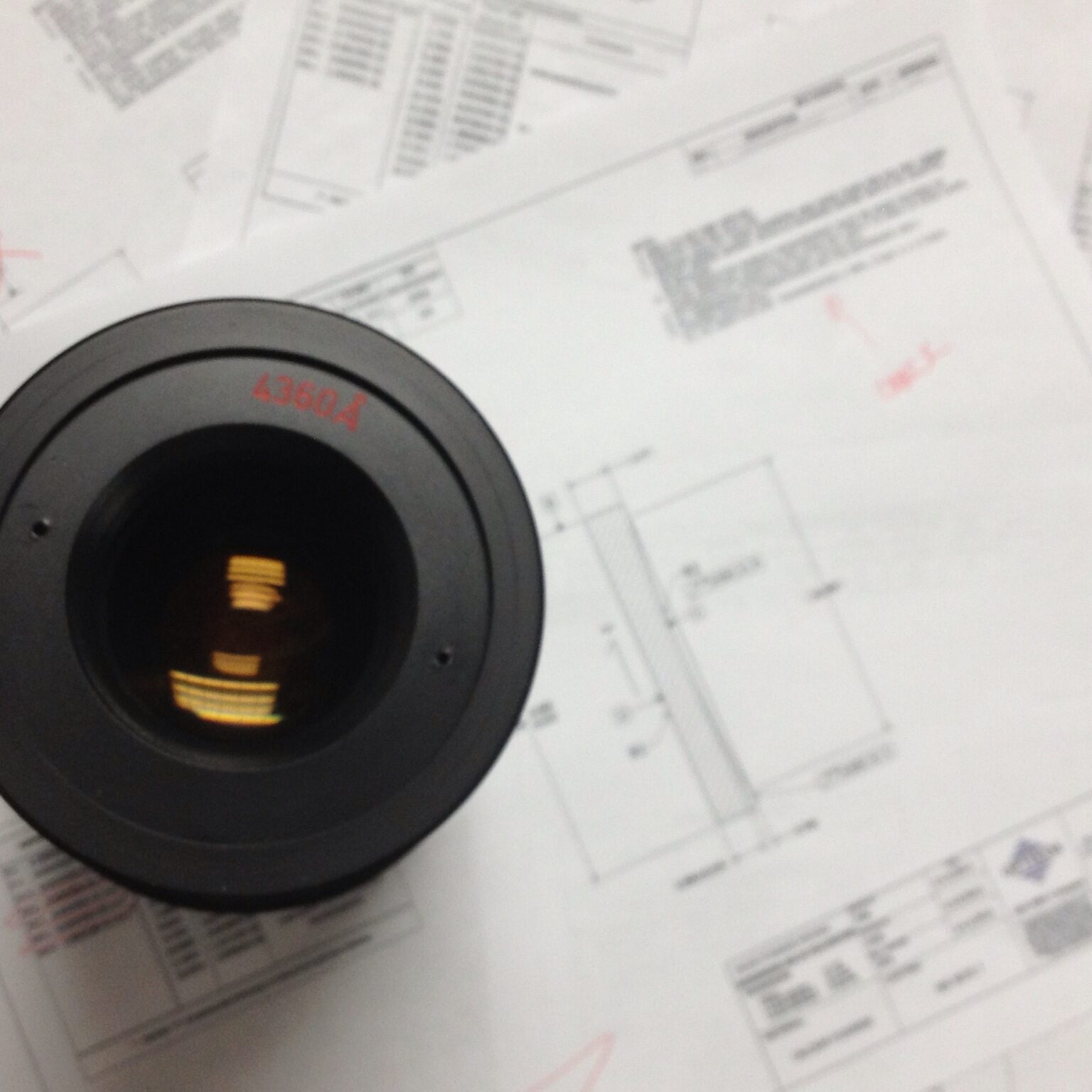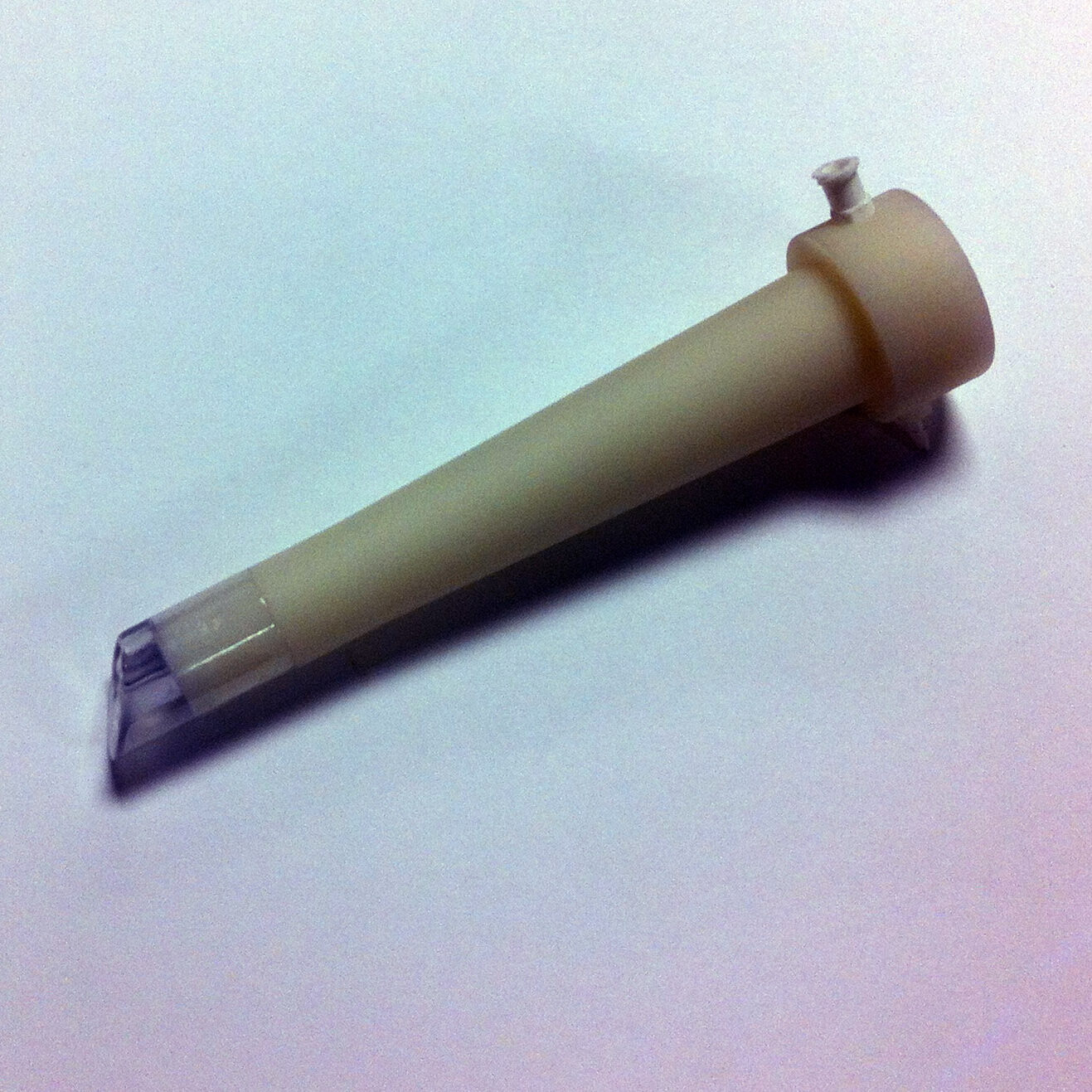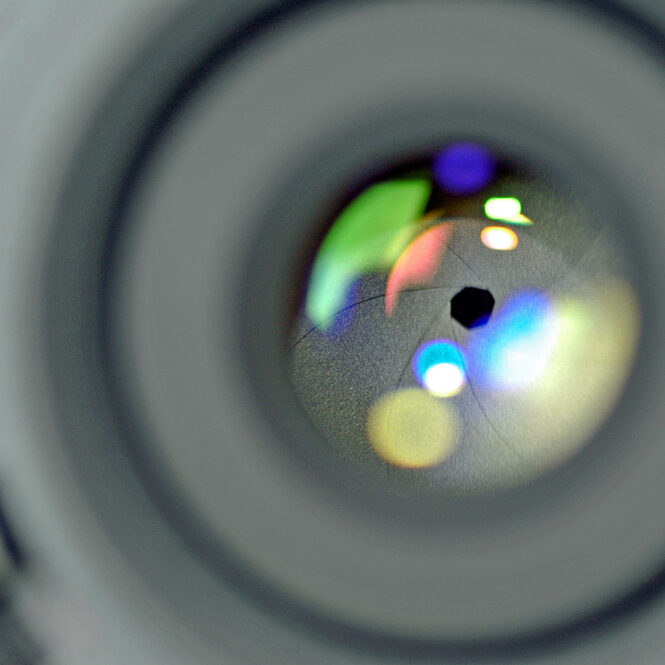Partnering for Performance
We work side-by-side with our clients to solve their toughest problems.
These case studies show how collaboration and innovation come together to produce measurable outcomes.
Case Study: Giving Stray Light a Home
Click here to view as a PDF The Customer As a leading environment sensing company, the customer in this case study develops technologies such as LIDAR systems for situational awareness, oceanographic instruments for environmental monitoring, and unmanned aerial system detection tools. With a strong presence in defense, aerospace, energy, and commercial sectors, the company has been at the forefront of innovation for national and global security challenges since its founding in the 1970s. The Problem The customer wanted to change sensors on two pre-designed optical assemblies while making minimal opto-mechanical updates. With this change, a stray light issue was encountered, impacting the overall image quality of the system. Specifically, dim glares or flares were observed from out-of-field light sources when...
Case Study: Optical Forensic Analysis
The Customer Known as a global powerhouse in the automotive industry, this customer has decades of crafting cutting-edge innovations in mobility. Their broad portfolio spans everything from electrification and autonomy to structural components and safety technologies, making them a go-to partner for automakers looking to push the boundaries of performance and efficiency. As one of the world’s largest suppliers, they bring expertise in vehicle systems, advanced manufacturing, and sustainable solutions to the forefront of modern transportation. The Problem The customer observed image quality deterioration and began to investigate and diagnose the root cause. After passing the initial testing, the optical assemblies failed to meet the same specifications at OQC (outgoing quality control). With limited optical engineering resources available inhouse, Optikos...
Case Study: Automation Strategy Cuts Cycle Time by 50% for AR Lens Testing
View/print as a PDF Primary Challenges & Breakthroughs Augmented reality (AR) lens manufacturing faces important testing challenges due to complex multi-parameter validation requirements and sequential testing dependencies. Cycle time constraints create critical bottlenecks for augmented reality optics, with comprehensive performance testing of high-precision AR lenses averaging 3-8 minutes per unit—directly impacting manufacturing throughput, workforce costs, and delivery schedules. A new Optikos LensCheck™ and advanced robotics strategy has achieved 50% reduction in cycle time while delivering substantial throughput gains during peak production cycles for a Fortune-500 client. High Volume Lens Assembly Overview The world of lens manufacturing is ruled by three important production parameters: quality, investment, and time. Within this matrix, the testing phase of optical systems...
Locating and Refueling Satellites
NASA worked with Optikos to develop a system to characterize visible wavelength lenses used in the RESTORE-L payload. Optikos delivered a unique quality measurement station designed to characterize the image quality of lens systems used on the NASA Restore-L Satellite Service Robots. These lenses act as the system’s “eyes” as it approaches and docks with a target satellite. To simulate docking conditions, a special Optikos LensCheck™ System projects resolution targets and measures the quality of lens imagery as the targets move from long to short range distances. The mission details can be found at this publicly available link here. Have a project in mind? Get started here.
Case Study: Drug Discovery: Carterra® LSA Platform Accelerates Lifesaving Antibody Drug Development
View/print as a PDF Figure 1: Carterra LSA platform with proprietary HT-SPR technology enables a disruption in antibody discovery and development Carterra® is a leading provider of pharmaceutical R&D instruments that accelerate the discovery of novel therapeutic antibody candidates. Carterra’s founder and leaders of engineering and research contacted Optikos with a revolutionary idea that would dramatically improve the efficiency of antibody screening for pharmaceutical companies. Their vision was a fully integrated, screening and characterization platform that would combine their patented flow printing microfluidics with real-time high-throughput surface plasmon resonance (HT-SPR) optical detection. This system coupled with one-of-a-kind software capabilities, if successful, would deliver many times the data in a fraction of the time, with minuscule sample...
Measuring Folded Optics
Technology is constantly evolving, and as it does, the strain and need for cutting-edge optics grows. As manufacturers strive to make infrared cameras smaller and smaller, they often employ a folded optical system in which the optical axis of the front of the lens is not on the same line as the optical axis exiting the lens. This often leads to an image plane that is folded 90-degrees to the front of the lens. This fold can be in either the horizontal or vertical plane. Optikos developed the SD-800 and SD-900 image analyzers to easily access these folded image plane locations. The design challenges included implementing accurate rotation in two axes: one to rotate to four viewing positions (up, down,...
Optics And Design for Fluorescent Imaging
Our client was creating a highly sensitive fluorescent imaging system for biomedical use, and Optikos was contacted to develop the mechanical design. The client had already selected their lens supplier, but did not have specific experience in this type of vendor selection and optical testing results from the original lenses were subpar. We performed measurements on the mechanics and the optics and found the optics to be out of spec, so we notified our customer about the issue and contacted one of our trusted suppliers to ensure delivery of optimal lenses. Our team was able to obtain the new lenses very quickly, and the system subsequently performed exactly as the customer needed with the new components and mechanical design. Our...
Infrared Automotive Lenses
Optics for the Road Ahead Leading automotive manufacturers are relying heavily on infrared cameras to improve vehicle performance and safety, especially in challenging environments such as night time, heavy fog, and snowy conditions with reduced visible illumination. Because the performance of the infrared optics is critical in these systems, most automotive manufacturers require all lenses be tested, rather than a small sample of lenses from each lot. The LensCheck LWIR system is an ideal choice for evaluating the performance of these infrared lenses which are found in automobiles every day on roads around the globe. Have a project in mind? Get started here.
Large Area Optics
MATERION ACKNOWLEDGEMENTS "The technical expertise and skills of the Large Optics Equipment Development Team enabled our success. These included Materion technical oversight provided by Ian Tribick. Dale L’Hussier managed the day-to-day activities and planning of the construction project. Steve Chiavaroli led the Dynavac team, John Prittie led the Interlab team and Steve Fantone led the Optikos team. Steve Chiavaroli and David Imrie of Optikos made significant contributions to this paper. Their work is gratefully acknowledged." Have a project in mind? Get started here.
Optics Help Treat Cancer
Optikos is working with Lumicell on the optical-mechanical design and testing of a handheld imaging system that helps improve patient outcomes by identifying cancer cells “left behind on tumor cavity walls.” The company’s lead product, the Lumicell System “features an investigational optical agent and a handheld device that enable cancer surgeons to see and remove cancer cells in real-time during operations.” Read more about Lumicell’s exciting developments in treating cancer and other diseased tissues on their website or in this recent Time Magazine article. Have a project in mind? Get started here.
Superior Imaging and Control during Surgery
Platform Imaging Demo at Photonics West Platform Imaging approached Optikos during the prototype design phase of their Visibot™ Visualization System, a device that is being commercialized for minimally invasive surgery. It includes two main components, connected by a small tether: 1) An insertable camera module with high definition camera, integrated LED's for illumination, lens wash nozzle, and pan and tilt functionality; and 2) A controller box with a computer and a user interface. The computer houses image processing software, tool tracking software for automation of pan and tilt, and a touch panel for displaying the image and controlling system functions. The surgeon inserts both a camera and surgical tool in the patient’s abdomen through one laparoscopic...
Ensuring Image Quality for Tracking Telescopes
Focusing NASA tracking telescopes ITT Corporation was responsible for five NASA Space Shuttle tracking telescope systems at the launch site in Cape Canaveral Florida. These telescopes, called ATOTS, MIGOR, and DOAMS, were used for various types of downrange imaging of shuttle launches. The telescopes were exhibiting less than optimal imaging characteristics from out of focus camera images. ITT was looking for a method to realign and precisely focus the high-speed cameras on each of these tracking telescopes. The solution needed to be simple, robust and cost effective. It also needed to operate on-site at each telescope installation. Optikos engineers developed a solution inspired by a common optical design approach: ray tracing. By tracing single rays of light into the telescope system and monitoring...
Competitive Benchmarking for Surgical Microscopes
Our client wanted to develop a competitive benchmark of a sampling of available surgical microscopes and relate it to a subjective evaluation by physicians. Optikos developed a test plan that included both radiometric and image quality metrics that captured the relevant imaging performance criteria. This evaluation was mapped against the subjective assessments by physicians and used to develop a rational competitive benchmark evaluation. Our client used the information to decide how to improve/augment their own product line. Have a project in mind? Get started here.
3D Imager for Minimally Invasive Surgery
Lens and Camera Testing for Image Quality Assurance Our client had a unique design for a surgical system, but needed a stereoscopic camera system designed for manufacture and 510K FDA clearance. The Optikos team of optical and mechanical engineers reviewed several issues with the client’s development team to streamline the design for future manufacturing. We learned that there were difficulties aligning the customer’s prototype visualization system and achieving reliable imaging performance. Optikos was able to provide a simplified, “drop together” design, updated electronics and in-process verification to assure consistent performance for all units, and helped our client create a stereoscopic camera for its surgical system, enabling 3D high-definition visualization for surgeons. ...
Meeting Specs for Navigational Lighting
Our client had taken on a contract to produce a new type of navigational lighting for marine applications. Initial testing of their design indicated that it did not satisfy US Coast Guard brightness and angular visibility requirements. Optikos engineers worked with the client to identify comprehensive and complete product requirements and reviewed the existing design to fully understand its shortcomings. Optikos developed a design utilizing custom conical surfaces that could be readily fabricated and implemented into the luminaire, and provided a comprehensive evaluation of the distribution pattern of the luminaire to confirm compliance with US Coast Guard specifications. The product was then put into production. Have a project in mind? Get started here.
A New ViewMaster® Meets Cost and Quality Goals
When Fisher-Price procured the legendary ViewMaster® product line, they wanted to bring additional play value to the product. The challenge was to rejuvenate an optically-based consumer product for the toy market while providing excellent viewing quality and meeting aggressive cost-performance targets. Optikos developed, patented, and licensed to Fisher-Price a new type of viewer that combined a binocular optics with a ViewMaster® image disc. Since the ViewMaster® slides were viewed by reflection off a mirror; new discs were required to achieve proper stereo imaging. The aggressive product cost targets were achieved by using plastic optical components, an off-shore manufacturing solution. Along with a tie-in with the Discovery Channel, the Fisher-Price Discovery Viewer reinvigorated the ViewMaster® product line bringing a true...
Single-use Digital Imaging for Colonoscopy
Boston Scientific wanted to develop a single-use digital imaging system that would be cost competitive with conventional colonoscopy imaging. In the late 1990’s, they approached Optikos to design the entire electro-optical imaging chain for this type of product. Optikos recognized that the decreasing cost of high brightness LEDs, CMOS imagers, and plastic optical components would soon allow the type of extremely low-cost and high-quality digital imaging systems that this product would require. Through the development and prototype stage, we worked closely with our client and designed a patented CMOS imaging system with image quality comparable to conventional imaging systems that could be manufactured at a price point previously never thought possible. Optikos was responsible for the lens design, the digital...
Production Testing of Guidance Systems
Our defense client is a high volume manufacturer of defense electro-optical systems and wanted to develop a flexible test station that would provide an automated capability to test a variety of guidance systems with a broad range of performance requirements and a very unique physical configuration. Optikos designed, developed, and delivered an advanced, large scale, remotely operated production guidance system testing platform. The system included multiple load stations for high production throughput, a calibrated variable laser light source with over 9 decades of signal attenuation, and a high quality all-reflective collimator with signal and polarization uniformity of less than 10% throughout its 8″ test aperture. Using this test platform, the customer was able to achieve full-scale and automated testing of...
Lens Redesign and Alignment to Meet Specs
Our client brought a prototype anamorphic lens to our facility that did not satisfy its MTF specification. They had been to numerous optical facilities across the country and had been unable to improve its performance. Optikos reviewed the system requirements and the details of the optical and mechanical designs. The lens was then placed on an optical bench to allow for visual inspection of the imagery across the field. By noting subtle details relating to the size and symmetry of the star images across the field, and relating those asymmetries to the design and potential mechanical misalignments of the toroidal and cylindrical surfaces in the system, Optikos engineers iteratively shimmed the design into alignment, brought its performance into specification...
Programming Spectral Content in Microscopy
Our client required a microscopy system with the unique capability of programming the spectral content of the illumination. The primary application for this instrument was research and development of diseased tissue pathology. Optikos invented a high-speed, electronically programmable light engine to provide illumination for the microscopy system. The spectrum could be tailored to any shape across the 400nm to 700nm waveband with 10nm resolution. The light engine also included switchable optics to exactly match the field of view and numerical aperture of the imaging objectives used with the system. The prototypes delivered to the customer exceeded expectations and were immediately deployed into the field for developing this area of tissue pathology. The customer gained valuable intellectual property directly from the...
A Custom Solution for MWIR In-Situ Optical Testing
Our defense client produced Intelligence, Surveillance, and Reconnaissance (ISR) infrared optical systems that required in-situ testing of the assemblies. This requirement called for delivery of an interferometric test beam into the large focal plane pod-mounted or fixture-mounted electro-optical system. A custom Mid-Wave Infrared (MWIR) interferometer system was required since commercially available testing systems couldn’t meet the beam delivery requirements. The program required a quick development cycle to bring our customer’s production online. Optikos competed against other prominent optical metrology groups, and won this contract by proposing a custom-designed MWIR Twyman-Green interferometer with an elevated platform and an articulating optical arm with accessories optics. This created a nearly infinitely adjustable beam positioner. The entire system was floated on air bearings to...
Identifying a Problem Lens before Fabrication
Our client was awarded a contract to build 100+ LWIR optic modules, but did not have experience with the alignment and testing of optical assemblies. They subcontracted Optikos to assemble, align, and test the LWIR optic modules. Optikos reviewed the documentation package and determined that the customer had ordered sets of alternate lenses that could not meet the required image quality and advised our customer to change the order. Fortunately, a small number of lenses had been fabricated at this time, so a costly mistake was avoided. Optikos developed a series of fixtures and alignment techniques for bonding lens elements and adjusting mirror angles to meet the stringent line-of-sight requirements. Optikos achieved 100% yield and delivered the assembled units on-time...
Benchmarking for Process and Cost Improvements
Our client wanted to benchmark their internal production costs against industry competitors. Optikos was provided with a set of desired manufacturing optical tolerances and an optical model of a baseline lens system. Optikos used the optical model and the tolerances to generate tolerance lens drawings of the optical elements, and sent out a request for quote to a variety of lens manufacturers. The resulting quotes were compiled and analyzed to highlight areas of competitiveness and areas for improvement. The manufacturing cost data and recommendations were provided to our client, who was able to make strategic business decisions regarding process and cost improvements for a more competitive product. Have a project in mind? Get started here.
Cardioport Prototype for Open-Heart Surgery
Dr. del Nido and Dr. Vasilyev at Boston Children’s Hospital developed a novel, prototype cardioport for beating heart, image-guided intracardiac surgery for pediatric patients. The device incorporated an endoscope and a prototype viewing window, but the design of the prototype window distorted a portion of the endoscope’s field of view critical to the surgical procedure. The Technology and Innovation Development Office of Children’s Hospital Boston selected Optikos to assist in the redesign and development of the cardioport imaging window. Optikos was provided mechanical models and optical specifications of the existing prototype, and we used this data to develop an optical model of the imaging system. The optical challenge was not unlike that of designing an aerodynamic window in which...
Modifying Design for Accurate Barcode Scanning
Our client’s new product was released to manufacturing and the initial builds did not perform satisfactorily. Optikos reviewed the product specification and design. We inspected vendor supplied piece parts and discovered that the radiometry of the design and the optical performance were insufficient to ensure adequate performance over the entire set of system requirements. We modeled the design, reviewed the specification requirements, and made design changes that ensured the product would satisfy the desired performance specifications. We also inspected all relevant piece parts and uncovered errors in the lens tooling and worked with the supplier to implement the new design and correct the tooling errors. The customer’s product development effort is brought back on track and its performance and...
Heads-Up Display Testing with Multi-Sensor Fusion
Our client designed and fabricated multi-spectral heads-up data fusion displays for visual guidance of aircraft. Unfortunately, they did not have the in-house capability for testing the assembled unit. Optikos reviewed the technical specification and quickly assembled the fixturing and metrology apparatus to ensure the unit performance (MTF) over its full field of view, pupil diameters, and positions. The customer was able to demonstrate compliance with all design specifications. Have a project in mind? Get started here.
Affordable Night Vision Consumer Product
In the late 1990s, Optikos engineers anticipated the coming wave of low-cost CMOS images and associated displays, and developed and patented a low-cost night vision consumer product. Working with Gamma Millennium Technologies, SpyNet was licensed to two major toy manufacturers: Jakks, Inc. and Wild Planet. Their implementation of Optikos® technology in several product forms brought the excitement of night vision technology to young children and teens at an affordable cost. Have a project in mind? Get started here.
Gene Sequencing System Alignment and Integration
Our client developed a flow cell based genome sequencing instrument intended for medium volume production. The Electro-Optical subsystems included: • Illumination—Multiple Lasers with complex beam shaping were used to evenly illuminate the object plane of a TIRFM (Total Internal Reflection Fluorescence Microscope) system. • Imaging—Quad camera focal plane used to image fluoresced sub-diffraction limit objects over a large field of view. • Focus Monitor—Custom IR laser based reflective system used in the positioner feedback loop to maintain focus position with-in +/- 0.1um. Alignment of these subsystems and integration with each other was an art form. The time to build and align a system was cost prohibitive. Optikos engineers designed test fixtures, developed intermediate alignment techniques, and wrote...
Identifying Issues in Lens Design
Our client had sourced a lens that satisfied its written specification, but it did not result in satisfactory imaging, and they were unable to identify what was the source of the problem or describe to their supplier how the lens needed to be improved. Optikos reviewed the system requirements and the details of the optical and mechanical designs, and subsequently measured the veiling glare and ghost imaging to determine that the lens design had a significant ghosting problem that was exacerbated by reflections off the image sensor. By modeling the design on the computer and relating that to the observed ghosting phenomenon, Optikos was able to determine which optical surfaces required improved coatings. The customer was able to specify to...
Low-Cost 7X Binocular
Optikos developed and licensed technology for a very low cost 7X binocular. Incorporating glass mirrors and injection molded lenses utilizing aspheric surfaces, the BNOX binoculars achieved performance equivalent to glass prism binoculars at a price point that was a fraction of conventional binoculars. The performance, low weight, compactness and affordable price combined to provide a new price performance point in the market. Have a project in mind? Get started here.







